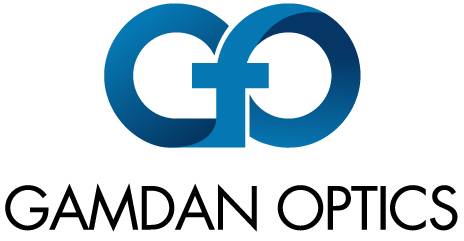GAMDAN Optics LBO Applications
GAMDAN OPTICS LBO APPLICATIONS
L-B-O, what is it good for? Absolutely the best frequency doubling and tripling crystal when you are looking for the most robust and damage resistant material.
LBO is a non-linear crystal. The significance of that is it can change the wavelength of an input beam to a different wavelength output. GAMDAN LBO has essentially no absorption over a wide range of wavelengths, from 160 to 2600 nanometers. Which means it is an excellent choice for frequency tripling the emission of popular one-micron lasers into the UV, at around 355 nanometers. LBO has such great transmittance that it can even be used to generate 266 nanometer light, although the absorption below 300nm is generally too high for the conversion to be useful. It also displays very good efficiency for frequency conversion in general.
LBO crystals are likewise the best choice for frequency conversion of Ti sapphire, Alexandrite, and dye lasers, and especially continuous wave (CW) versions (high peak power suits LBO just fine. The greater the power density the better this crystal performs).
They can also be used for frequency doubling invisible one-micron light into 532nm visible green light, an application that has previously belonged to KTP crystals. But LBO has better transparency, less flaws, and does not suffer from gray tracking. The result is higher power and lifetime capability. It is also less expensive than hydrothermal KTP, so it has begun to replace KTP in the more demanding applications.
APPLICATIONS
The most common utilization of LBO is in short pulse, high pulse rate lasers; the higher power density the better. It is also very well suited for non-critical phase matching (NCPM) for frequency conversion of CW and quasi-CW radiation, at 90% conversion efficiency without walk-off.
At the longer wavelength region of the spectrum, LBO is used for tunable OPO’s to yield near-infrared radiation.
Diode pumped solid state lasers with frequency converting LBO are highly reliable, compact, and use less energy than the traditional lasers they often replace. In many cases there was no suitable or affordable laser to perform the functions that DPSS lasers have enabled. They can have superior beam quality to the lasers that they substitute for, while performing in hostile environments with a minimum of maintenance.
High intensity, short pulse lasers with short wavelengths have enabled many manufacturing processes, or improved the results obtained from more traditional lasers. Those characteristics make possible a much smaller, even negligible HAZ (heat affected zone) around the location of beam impingement. Also, short wavelengths are absorbed rather than reflected from shiny metals. Even reflective copper can be efficiently welded or cut with green laser light. Applications include manufacturing processes for internal medical devices (like stents), semiconductor functions such as probe cards, microvias, resistor trimming, and fuel injector nozzles.
UV lasers excel at marking. Materials that are otherwise transparent, including common glass, lenses, and prisms, various forms of plastics and organic and inorganic materials can be precisely marked with frequency tripled light. Longer wavelengths are generally ineffective, or cause localized damage. These are but a few of the possibilities, and the list continues to grow. Lesser-known uses are for laser printing, high-resolution spectroscopy, and quantum optics.
Shorter wavelength light with higher energy pulses delivers improved precision and smaller spot size than industrial strength neodymium or CO2 lasers, thus achieving finer resolution and accuracy. Frequency tripled lasers are capable of 3D modeling (laser additive manufacturing) with various materials.
Pulsed solid state UV lasers have been investigated for generating the ultrashort wavelength deep ultraviolet light that currently comes from excimer lasers, as used in photolithography of semiconductor chips.
MEDICAL LASER APPLICATIONS
Human tissue absorbs different wavelengths selectively, depending on the type, while transmitting other wavelengths. Ideally a wavelength is chosen to penetrate bodily fluids in most cases, yet be absorbed strongly by the target without damaging surrounding tissue. Medical lasers make use of those properties to enable certain procedures, or improve upon existing results. An example is using green output lasers for BHP surgery.
Benign Prostatic Hyperplasia is a common condition in men, resulting from an enlarged prostate gland. In the past, reducing the volume of the prostate to relieve symptoms to various degrees has been accomplished by drugs, electrocautery surgery, or other lasers. Green lasers operating at 532nm give superior results. That wavelength is strongly absorbed by blood rich tissue, so efficient reduction can be realized with little or no effect upon the surrounding tissue. Outpatient surgery is possible instead of a required hospital stay. Healing is also quicker and patient discomfort is reduced. Combined with savings in hospital costs, everyone wins!
The excellent optical homogeneity and lack of inclusions in GAMDAN material imply great undistorted wavefront output from your device. LBO has a very high internal damage threshold as a result of its low absorption. That property also avoids beam distortion from thermal expansion.
GAMDAN’s proprietary UV-grade superpolishing process (having achieved record setting Laser Induced Damage Threshold (LIDT) of >94.9J/cm2 at 355nm), and high LIDT coatings enable you to get the most out of your laser design, whether you generate doubled or tripled frequency light.
GAMDAN style Super Polishing and high Laser Damage Initiation Threshold coatings take the best advantage of LBO's particular properties.
Contact us for information on acquiring your own special LBO optics.
DENNIS J. GARRITY, AUTHOR
Dennis is an engineer with over 45 years of experience in fabrication, testing, and material evaluation for high precision optics, with extensive hands-on experience. More on the author can be found here.

